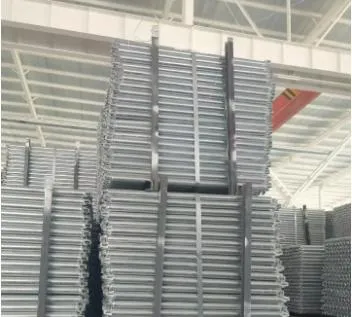
Scaffolding: Versatile Solutions for Every Project
Scaffolding is an essential tool in various construction and maintenance projects. Let's take a closer look at different types of scaffolding and their applications in daily life.

Leaches Scaffolding - Reliable Support in Challenging Conditions
Leaches scaffolding is known for its strength and stability, making it ideal for use in areas with difficult terrain or unstable ground. In daily life, it can be found in construction sites near water bodies or on sloping landscapes. For example, when building a dock or a retaining wall along a riverbank, leaches scaffolding provides a secure platform for workers to operate. It can also be used in mining operations or other industrial settings where the ground is uneven.
Interior Scaffolding - Perfect for Indoor Projects
Interior scaffolding is designed specifically for use inside buildings. It is commonly used for tasks such as painting high ceilings, installing lighting fixtures, or doing electrical work. In daily life, interior scaffolding can be seen in office buildings, shopping malls, and residential homes. Its compact design allows it to fit through narrow doorways and hallways, making it easy to set up and take down. For homeowners undertaking DIY projects, interior scaffolding provides a safe and stable platform to reach high areas without the need for ladders.
Heavy Duty Scaffolding - Built to Withstand Demanding Tasks
Heavy duty scaffolding is designed for applications that require extra strength and durability. It is commonly used in industrial construction projects, such as building factories, warehouses, and power plants. In daily life, heavy duty scaffolding can also be found in large-scale renovation projects or when working on tall structures. For example, when restoring a historic building or constructing a skyscraper, heavy duty scaffolding is essential to ensure the safety of workers and the stability of the structure.
Fiberglass Scaffolding - Lightweight and Non-Conductive
Fiberglass scaffolding is a popular choice for applications where electrical safety is a concern. It is lightweight, making it easy to transport and set up, and non-conductive, which reduces the risk of electrical shock. In daily life, fiberglass scaffolding is often used in electrical maintenance work, telecommunications installations, and other projects where there is a risk of coming into contact with electricity. It is also suitable for use in corrosive environments, as fiberglass is resistant to chemicals and moisture.
In conclusion, scaffolding comes in different types to meet the diverse needs of various projects. Whether it's leaches scaffolding for challenging terrains, interior scaffolding for indoor projects, heavy duty scaffolding for demanding tasks, or fiberglass scaffolding for electrical safety, there is a scaffolding solution for every situation. By choosing the right type of scaffolding, you can ensure the safety and efficiency of your construction or maintenance project.
-
The Importance of Reinforcement Bar in ConstructionNewsJul.11,2025
-
The Durability of Timber Steel FurnitureNewsJul.11,2025
-
How to Assemble Fixed Clamp Scaffolding SafelyNewsJul.11,2025
-
Essential Column Rebar Specifications for High-Rise BuildingsNewsJul.11,2025
-
Common Applications of Steel Keels in ConstructionNewsJul.11,2025
-
Benefits of Using Aluminum Scaffolding Ladders Over SteelNewsJul.11,2025
-
Stainless Steel Keel: Analysis of the Triple Advantages of Rigidity, Stability, and LightweightNewsJun.19,2025










